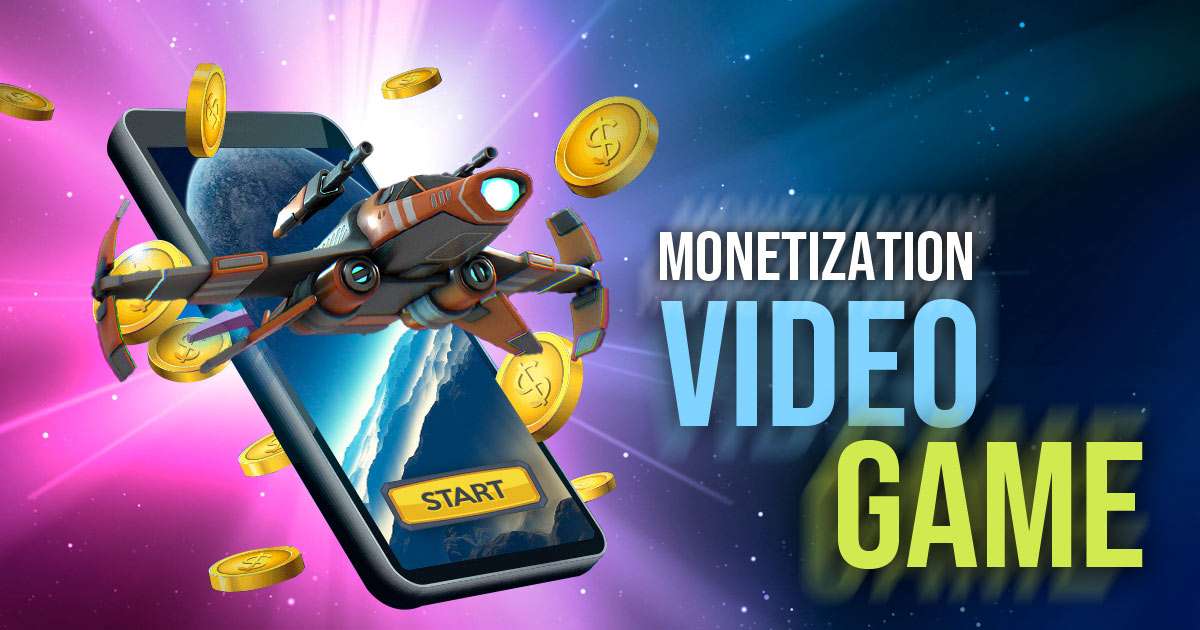6 Video Game Monetization Models to Make Money From

As gaming has become more popular, there are many ways to monetize a video game. In the past, games were mainly sold in stores, but now people can easily publish their beautifully designed games online. So, how can you make money from your game without upsetting your players? Should you charge players to download your game? Or ask for a monthly fee? Or maybe offer your game for free but show ads to make money?
We’re here to explain the most common ways games make money, including their advantages, disadvantages, and some tips to help you choose the right method for your game.
In-Game Purchases
In recent years, in-game purchases have become very popular as a way to make money from mobile games. This model offers games for free download but charges for extra content or features within the game, like special outfits or new levels. Players can buy these items once or subscribe regularly for access to premium features or exclusive content. This approach allows game creators to earn money from a larger audience and provide diverse content to keep players engaged and coming back for more.
When it comes to what you can offer players for purchase, there are several proven options available to monetize mobile games through in-game purchases:
- Consumables: In games, consumables are items you buy and use while playing. These could be extra lives, ammo for your weapons, or food to regain health.
- Exclusives: These are special purchases unique to the game, such as exclusive levels, special character items, or upgrades that enhance the gaming experience.
- Cosmetics: Games now earn a lot from cosmetic upgrades like skins, hats, costumes, and other digital enhancements, which players buy to personalize their gaming experience.
In-Game Advertising
In-game advertising involves brands displaying ads to players while they play the game, providing a great opportunity for brands to engage with gamers who are typically highly involved in the game. Games also offer a unique opportunity for brands to integrate their products into the gaming environment. These ads come in various forms, ranging from standard ads to visually captivating ones that grab players’ attention:
- Banner ads: These are static advertisements displaying brand-related information and images, often placed strategically in games like on main menus or during pauses to avoid interrupting gameplay.
- Interstitial ads: Full-screen ads appearing during natural breaks in gameplay, such as between levels, are known as interstitial ads. When done correctly, they generate revenue without significantly affecting the user experience.
- Playable ads: One method involves offering players access to a limited version of the game for free, often including the tutorial or initial level, as a way to incorporate playable ads.
Premium Paid Model
The traditional way games make money is through the premium paid model, where players pay upfront to access the whole game. This method has been effective for publishers in covering expenses and making profits. However, it comes with challenges. Convincing players to pay upfront can be tough, and these games might not stay popular for as long as free-to-play ones since player interest often depends on continuous updates.
Subscription Model
The subscription game model, which has gained popularity recently, owes some success to massively multiplayer online role-playing games. Both developers and players benefit from this model. Developers receive a steady income, allowing long-term investment in game development, while players enjoy a comprehensive gaming experience with frequent updates. However, the need for a monthly fee might discourage players from trying new games, and cancellations can affect revenue stability.
Sponsorships
The sponsorship model in gaming is becoming increasingly popular each year. Brands pay game developers to include their brand within the game, whether it’s by displaying a logo in menus or creating a fully branded experience within the game world. Free-to-play games, in particular, have embraced this model, hosting events with branded experiences that involve various entities, from large corporations to well-known personalities whose avatars engage in-game.
Combination of Strategies
To boost their earnings, publishers can blend different monetization strategies suited to their game. One effective approach involves using rewarded video ads, which inject advertising income into free-to-play setups. These ads can also be employed innovatively across various monetization methods.
For instance, in a free-to-play game offering purchasable exclusive features, developers can entice players to invest in new features by providing a teaser. Players might be offered a brief trial period with select custom features after watching a rewarded video ad. This trial can build confidence in players, prompting them to make permanent purchases for ongoing access.
Choose the Right Game Monetization Models
Explore the diverse avenues for monetizing your game, from in-game purchases to advertising, subscription models, sponsorships, and strategic combinations. Understand each method’s advantages, disadvantages, and potential for maximizing revenue. Craft a tailored approach that resonates with your audience while ensuring a seamless gaming experience.

